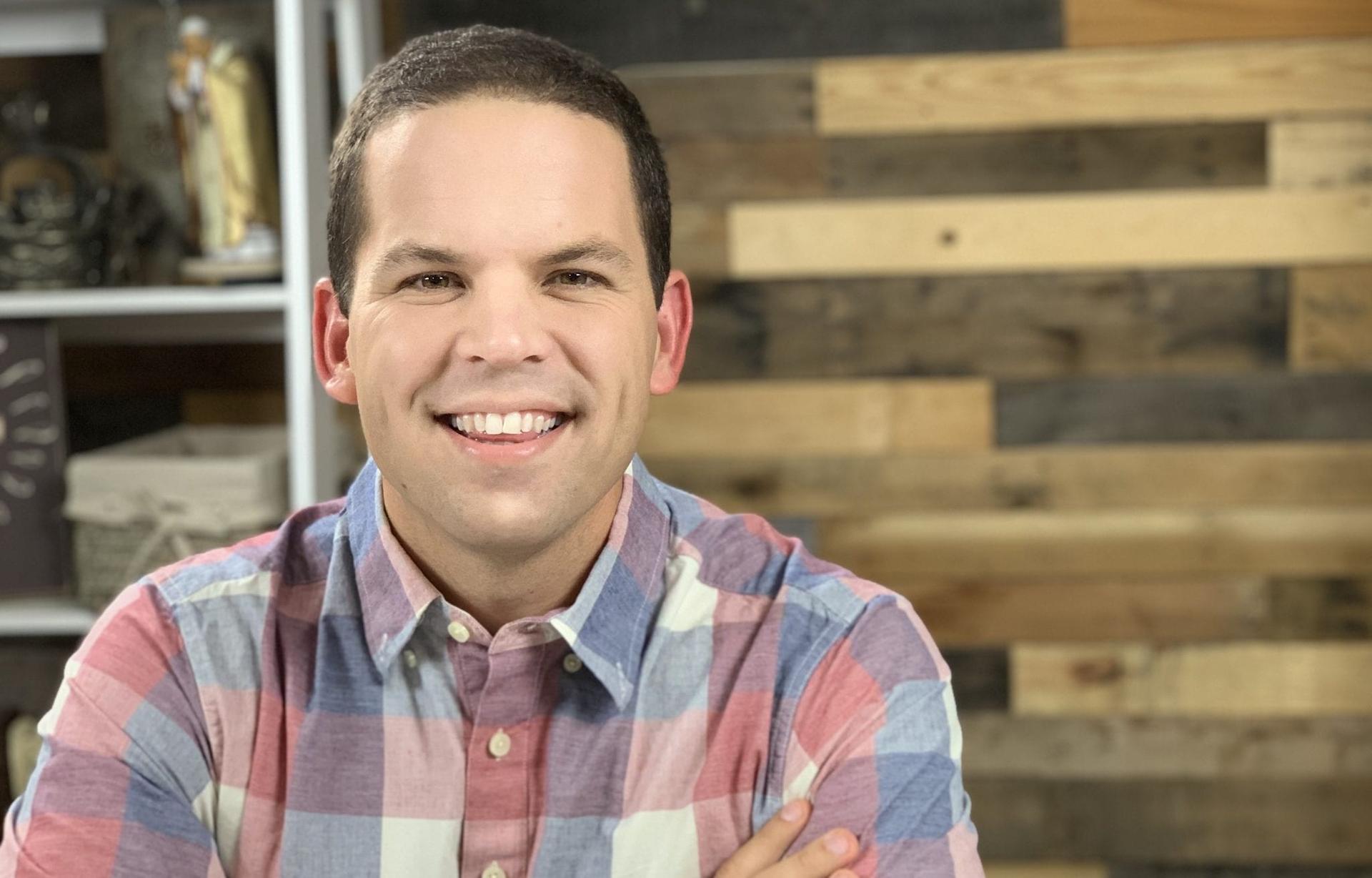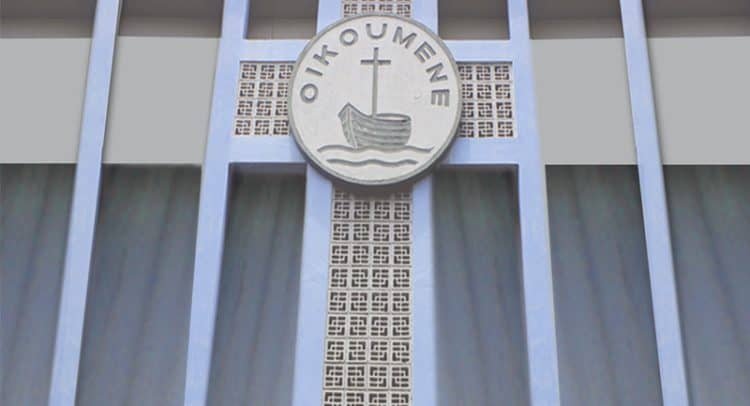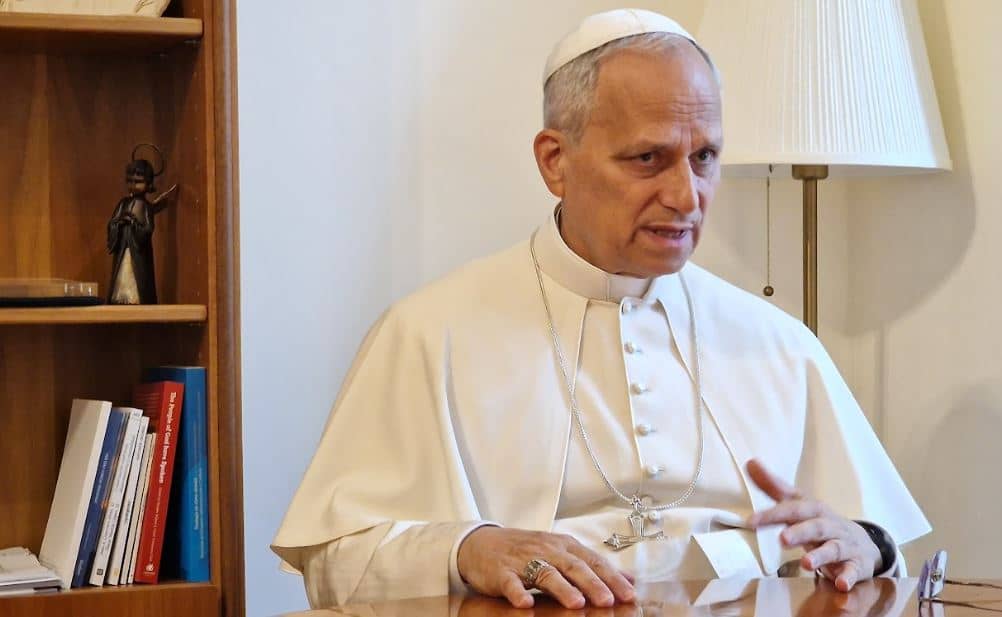[Editor’s Note: Brandon Vogt is a bestselling author of eight books and the founder of ClaritasU, which trains Catholics how to talk about their faith, especially hot-button issues. He works as the Content Director for Bishop Robert Barron’s Word on Fire Catholic Ministries. Vogt’s work has been featured by several media outlets including NPR, FoxNews, CBS, EWTN, Vatican Radio, Our Sunday Visitor, National Review, and Christianity Today. Vogt serves as a consultant to the U.S. Conference of Catholic Bishops’ Committee on Evangelization and Catechesis. He’s also on the board of the Society of G.K. Chesterton and serves as President of the Central Florida Chesterton Society. He spoke to Charles Camosy about his new book, What to Say and How to Say It: Discuss Your Catholic Faith with Clarity and Confidence.]
Camosy: Your forthcoming book, What to Say and How to Say It: Discuss Your Catholic Faith with Clarity and Confidence, comes after your award-winning and bestselling book Why I Am Catholic (and You Should Be Too). Can you tell us a little a bit about the journey that led you to this new book? What prompted you to write it?
Vogt: Sure! My previous book (Why I Am Catholic) was designed to make a positive case for Catholicism, especially to atheists, agnostics, and “nones,” those who don’t identify with any religion. The goal was to show how the Catholic faith is true, good, and beautiful, and why everyone should consider it.
This book approaches things from the other end. It responds to the most common reasons people give for not being Catholic, whether they doubt God exists, question the Bible or the Eucharist, or balk at the Church’s sexual moral teachings. So, it’s more a defensive resource. After my first book, lots of Catholics became more comfortable making the positive case for Catholicism. This book helps them answer the toughest objections they’ll hear in response.
I noticed that you ordered the chapters in such a way that the topics on God, Sacred Scripture, and the Eucharist come before topics on morality and ethics like abortion, sexuality, and gender. Can you tell us something about why you ordered the topics this way?
Yes, that was intentional. It’s simply the way evangelization should always proceed — from God, to Christ, to the moral life. Many people want to jump straight to debating abortion, same-sex marriage, or transgenderism, because those are admittedly urgent, contentious issues. But when it comes to evangelization, that’s the wrong starting point. The starting point is God and his objective order, then Christ and his Church, and then finally the moral life (notably, this is precisely how the Catechism of the Catholic Church is arranged.)
So, the order is very important. Suppose a non-religious friend sees you going to Mass, or Eucharistic adoration, and can’t make sense of what appears to be you worshiping a piece of bread. You want to help them understand, so you begin by referring to Jesus’ words in John 6 about the Eucharist, but your friend might raise the obvious question, “But the Bible is just full of myths, and historians aren’t even sure Jesus even existed. Why should I trust what the Bible says?” Well, you might be taken aback, but from there you could share good reasons to trust the Gospels, especially when they suggest Jesus is the divine Son of God, but that would only raise another question from your friend: “Well, how can I believe that Jesus is God when I’m not even sure whether God exists?” So, you see how if you start at the wrong end of the path, assuming things the other person doesn’t already believe, you’ll have to keep going backward before taking even one small step forward. That’s why it makes sense to start with God, then move to Christ and the Church, and then the moral issues.
A hundred years ago, you could be pretty confident that most Americans you spoke with believed in God or trusted the Bible. So, you could skip those steps. But that’s not true today. That’s why those fundamental topics appear first in the book. Increasingly, people are not just denying the Eucharist–they’re denying God exists at all, or that miracles are possible. So that’s where we need to start, with the basic foundational objections.
Is there data to show that one of these topics is more of a stumbling block than the others for those who find the Catholic faith to be a stumbling block?
Surveys do give us a general sense. When pollsters ask former Catholics why they no longer practice their faith, the number one answer is almost invariably some version of “I no longer believe.” They don’t find the Catholic faith to be rationally compelling, whether they reject teachings about God, morality, Jesus, or the sacraments. And when you zoom in to the anecdotal responses, you’ll see the biggest objections align with the chapters in this book. People say, “There’s no evidence for God,” or “the Bible is a mishmash of myth and legend,” or “the Church is so backward on morality, especially abortion and LGBT issues.”
That said, in my experience the biggest stumbling blocks, especially for young people, are the sexual-moral issues. Abortion, same-sex marriage, and transgenderism remain the three most prominent. Many non-Catholics are convinced the Catholic Church is evil because of its position on these three issues, that the Church is anti-woman, anti-homosexual, and against anyone struggling with gender questions. And because of that, they would never, ever be open to Catholicism. That’s why it’s critical we Catholics are equipped to discuss these topics in a winsome, persuasive way, to convince people that the Church isn’t evil when it comes to these moral issues, but that, on the contrary, her teachings make sense and lead to happiness.
Your book is full of good advice about how to make arguments. And as a former major in analytic philosophy this is my intellectual mother’s milk, so I love it. But in the last several years, I’ve got the strong sense that most people are not evangelized by arguments designed to change someone’s mind. Indeed, at the heart of preaching the Gospel, it seems to me, is the formation of certain kinds of relationships.
The Word of God did not come to us as proposition or argument. Instead, the Word of God was made flesh and dwelt among us as a man–whose relationships, more than arguments and evidence, were the vehicle for the Good News. But, then, at the end of the day, there needs to be intellectual and ideological content to the Gospel as well. So, frankly, I feel caught between a focus on arguments and evidence and a focus on relationships. Can your book help with this?
Yes, I think so. What you describe is a common tension raised by many Catholics, but I think it’s a false dilemma. When evangelizing, we don’t have to choose between “making arguments” and “loving people and attracting through witness.” We need both!
I tend to agree with you that not many people are converted solely by arguments. (Although I personally know a few converts who describe their conversion this way, and both C.S. Lewis and John Henry Newman changed their religious views because of rational arguments, not simply because they were loved into the faith by fellow Christians or inspired by their witness.)
That said, good, rational arguments are still necessary to clear the way for the apologetic of love and witness. Arguments may not lead people to convert in and of themselves, but they make conversion easier and smoother by removing intellectual obstacles to conversion. They play the John the Baptist role, clearing the path for Christ to move into someone’s heart and do his work.
It’s a sad reality that many young people dismiss Christianity as irrational. Survey after survey affirms this. They don’t think the basic theological and moral claims of Christianity make sense. Therefore, among the world’s many religions and worldviews, Christianity is simply not a live option for them. It’s as unthinkable for them to become Christian as it would be for me or you to join the Church of Scientology. If we’re to help sway them, we need to provide strong, clear arguments that show, at a minimum, how Christianity is at least rationally coherent. The arguments might not compel them to convert completely, but they can at least make our faith sensible and worth considering.
That’s why this book is so helpful. My goal is to equip Catholics to have conversations about these tough issues, so that none of these topics–the existence of God, abortion, transgenderism, etc.–remain barriers for their friends or family members to accept Catholicism.
Can you say something about the ClaritasU project and how it is related to this book?
A few years ago, I emailed my 60,000+ email followers to ask one question: when it comes to your faith, what do you most struggle with? Thousands of replies poured in, including the expected answers: “I wish I had a deeper prayer life,” “I’m sad my son/daughter has left the Church,” “I keep committing this one sin and don’t know what to do,” etc.
But by a landslide, the most common struggle was some version of, “I’m increasingly anxious about my faith. It seems the whole culture is pressing in around me, trying to undermine my beliefs. From the news, to media, to schools, to friends and family–I feel so anxious about being described as a hater, a bigot, or irrational simply because I’m a Catholic. When controversial topics come up, I don’t know how to respond.”
So, that gave rise to ClaritasU. I wanted to create an online training ground for Catholics to get them confident about their faith, so they could stop feeling nervous and afraid about discussing the hot-button elements. As I noted in the introduction to this book, Catholics are the least open to discussing their faith among all religious groups–we’re dead last. Why? Because most Catholics lack confidence in their beliefs. And why aren’t they confident? Because they’re not clear about those beliefs. Clarity breeds confidence, and so they have neither.
That’s where ClaritasU helps. Through simple video courses on topics like “Atheism,” “Abortion,” “Faith and Science,” and “Homosexuality,” I teach Catholics three basic things: the Catholic view on each topic, the best objections to the Catholic view, and exactly how to respond to those objections. That way, when those topics arise in conversation, Catholics won’t be scared, even when they face big objections. They’ll remain cool and confident, because they’ll know exactly what to say.
This book is an edited, expanded version of seven courses from inside ClaritasU, but that’s only a taste, because we now have over 20 courses on the platform. Readers can learn more and join thousands of other Catholics at https://ClaritasU.com.
Crux is dedicated to smart, wired and independent reporting on the Vatican and worldwide Catholic Church. That kind of reporting doesn’t come cheap, and we need your support. You can help Crux by giving a small amount monthly, or with a onetime gift. Please remember, Crux is a for-profit organization, so contributions are not tax-deductible.















